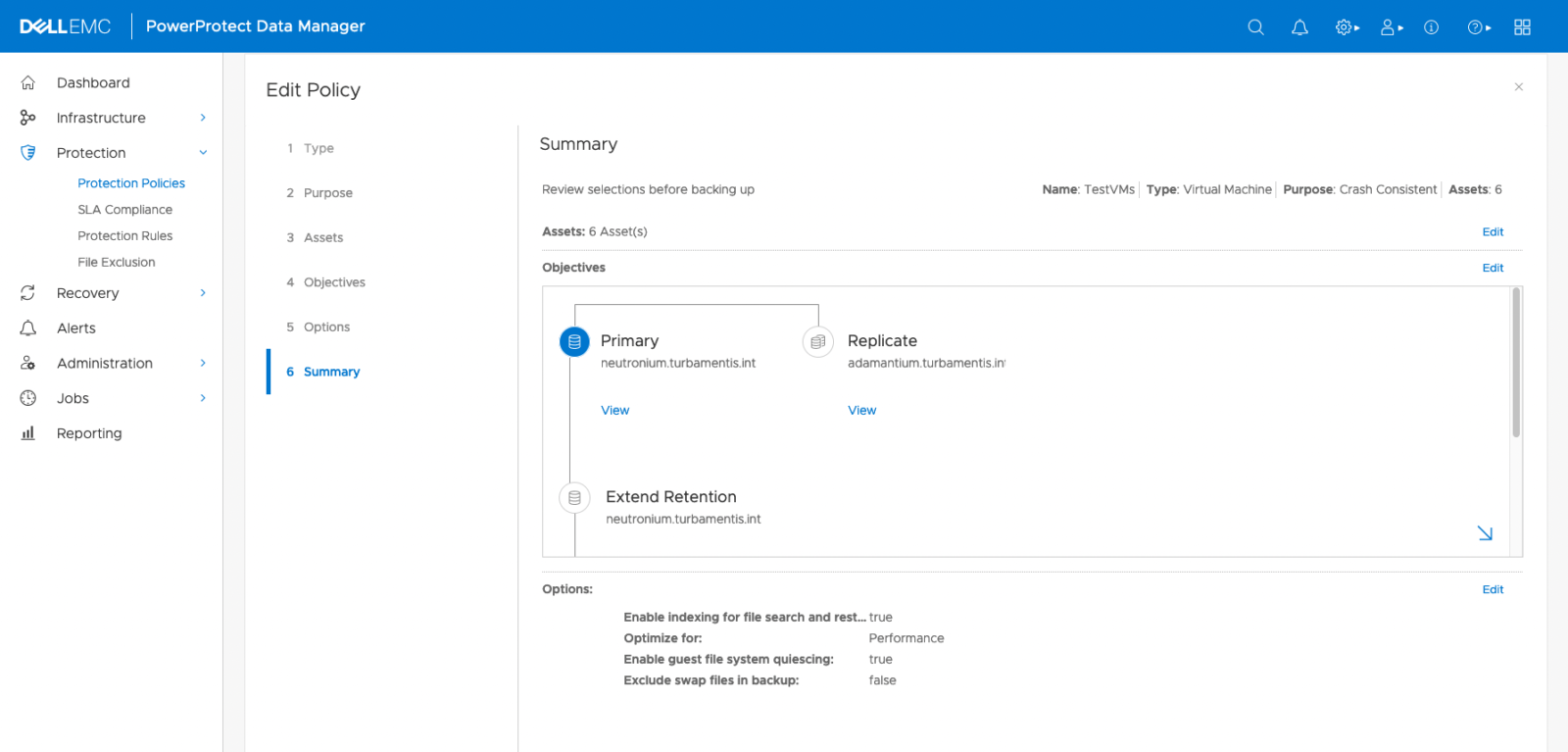Continuing the regular update cycle for PowerProtect Data Manager, version 19.8 has been released, and it’s got some great new changes in it.
As always, the release notes have a plethora of information about the update, which I’ll do my best to summarise below.
Kubernetes cluster support gets some updates to help with nominating an alternate storage-class mapping for temporary PersisentVolumeClaims (PVCs). What’s more, when you restore to a new namespace in the Data Manager GUI (e.g., restoring from one K8 cluster to another), you can granularly choose the storage class mappings. (For example – recovering from a Ceph CSI storage class to a PowerFlex CSI storage class.)
Operational functionality around the awesome Search Engine has been updated to include:
- Automatic restore of a search node from the Disaster Recovery backup if you run a DR restore
- Ability to delete search nodes from within the Data Manager interface – previously this required command-line intervention.
Security gets some updates, too.
You can use multiple identity providers – i.e., Data Manager can now authenticate users/groups from multiple external domains, rather than just one source.
For people who like custom certificates, even the REST API security certificate can be replaced with one of your own now. Since automation and controls for Data Manager revolve around REST APIs, this will be helpful for organisations that require tight controls in order to establish operational trust. You can also now delete credentials from within the GUI, too.
There are some other security updates that are all useful – documented processes around passwords after disaster recovery, options for administrators to reset the OS root password, and so on.
Data Manager 19.8 supports the PowerProtect Data Protection Appliances running v2.6 (the release notes refers to the previous product name here – IDPA series appliances). This is a great update in allowing companies that have committed to the full-stack appliances to use both protection software platforms if they want, or even switch the software platform purely to Data Manager.
From a cloud perspective, Data Manager 19.8 now supports the Azure VMware Solution (AVS). More on the VMware front: protection policies can now have more than one selection criteria for the inclusion rules, and you can use AND or OR operators to combine options and reduce the number of protection policies you need.
While previously each protection policy would allocate to its own Mtree on the PowerProtect DD storage platform, you can now have multiple policies target the same Mtree. While ideally (given the design principles of Data Manager) you shouldn’t need a lot of protection policies, this Mtree sharing option will let you get granular on policies where you need to without worrying about active Mtrees, etc.
For recoveries, compressed restores are now enabled – great in particular for databases you want to get back ASAP. Additionally, on the recovery front, the Exchange plugin allows you to do a granular-level restoration to a proxy that doesn’t have Exchange installed on it. Still on recovery, the Recovery area includes file search for virtual machines, which was previously split off a little separately.
There has also been a heap of general interface tweaks and improvements – job monitoring has been substantially updated (I love it!), and there’s a lot more granular information available about running jobs and states. The biggest updates, though, I believe, are in the layout of policy configuration. This includes replacing Backup Promotion with Extended Retention and the introduction of yearly extended retention options. (E.g., keeping an extended retention copy of one backup per year.) What’s more, there’s a lot more control now over which protection copy gets held for extended retention, including options for grabbing an nth weekday of the month (e.g., “2nd Saturday of August”), or any specific day of a month, including a generic “Last” day to extend the retention of the last backup of the month, no matter what date that was. (NetWorker users will feel right at home with this.)
There are many more updates within Data Manager, but you can read the full list from the release notes. (Full documentation link here.)
I’ve got a couple of videos below showing the new protection policy Objectives editor in operation – and also some additional information over the Extended Retention changes.
All up, this is a great update to PowerProtect Data Manager!

Good day,
Came across a VM tag issue when creating Protection Rules, that PPDM appears not retrieving all VM tags from associated vCenter. Wonder if there is limit setting on amount of tags can be imported to PPDM? Thanks.
Hi Ray,
I’m not aware if there’s such a limitation — it may be best to log a service request over that.